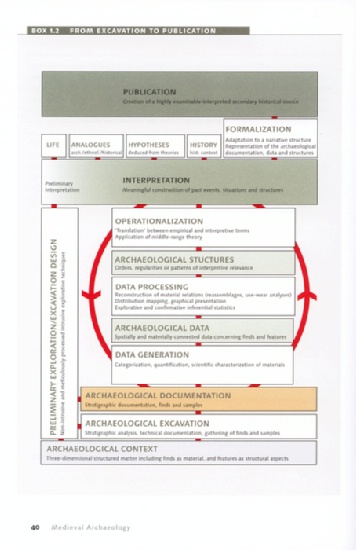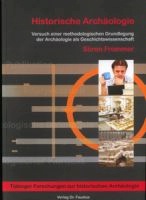Box 1.2 From Excavation to Publication
Since the intrusive access to the archaeological context is unique (represented by rhe narrow bars in the graph in contrast to the repeatable processes represented by the thick bars), the initial phase of planning and excavation plays a fundamental role. The common separation between the planning and excavation phases, on the one hand, and the subsequent evaluation of the results on the other, with regard to the staff as well as to its design, directly affects the quality and adequacy of this stage of the interpretative process. The web of interactions during the interpretive evaluation takes up a large part of the archaceologist's work. Just like the overall chart, this web represents a non-linear hermeneutic process of perception. It is, however, strongly oriented by the data. Quantitative-deductivist procedures that determine the individual steps are thereby integrated into an overall hermeneutic framework. Within such an integrating approach, hermeneutics and deductivism are not dichotomous, but fruitfully compatible (Kosso 1991; Patrick 1985; Hodder & Hudson 2003, 239-42). The sequence of the representations (coloured boxes) of the archaeological record used here follows in part the `Archaeological Method' of Evžen Neustupný (1993); the term `archaeological structures' has likewise been adapted from this work. Within archaeological practice, the documentation resulting from excavation is meaningfully transcended by phenomenological access, as well as by conversion into data for processing. The potential of `Life', `Analogues', `Hypotheses' and `History' (small boxes), as sources of comparative knowledge, has been widely used ever since. These factors - understood as unrecognised influences - cannot anyway be avoided, a fact that has been stressed by both processual and post-processual archaeologists, from their distinct perspectives.
Aarhus University Press


